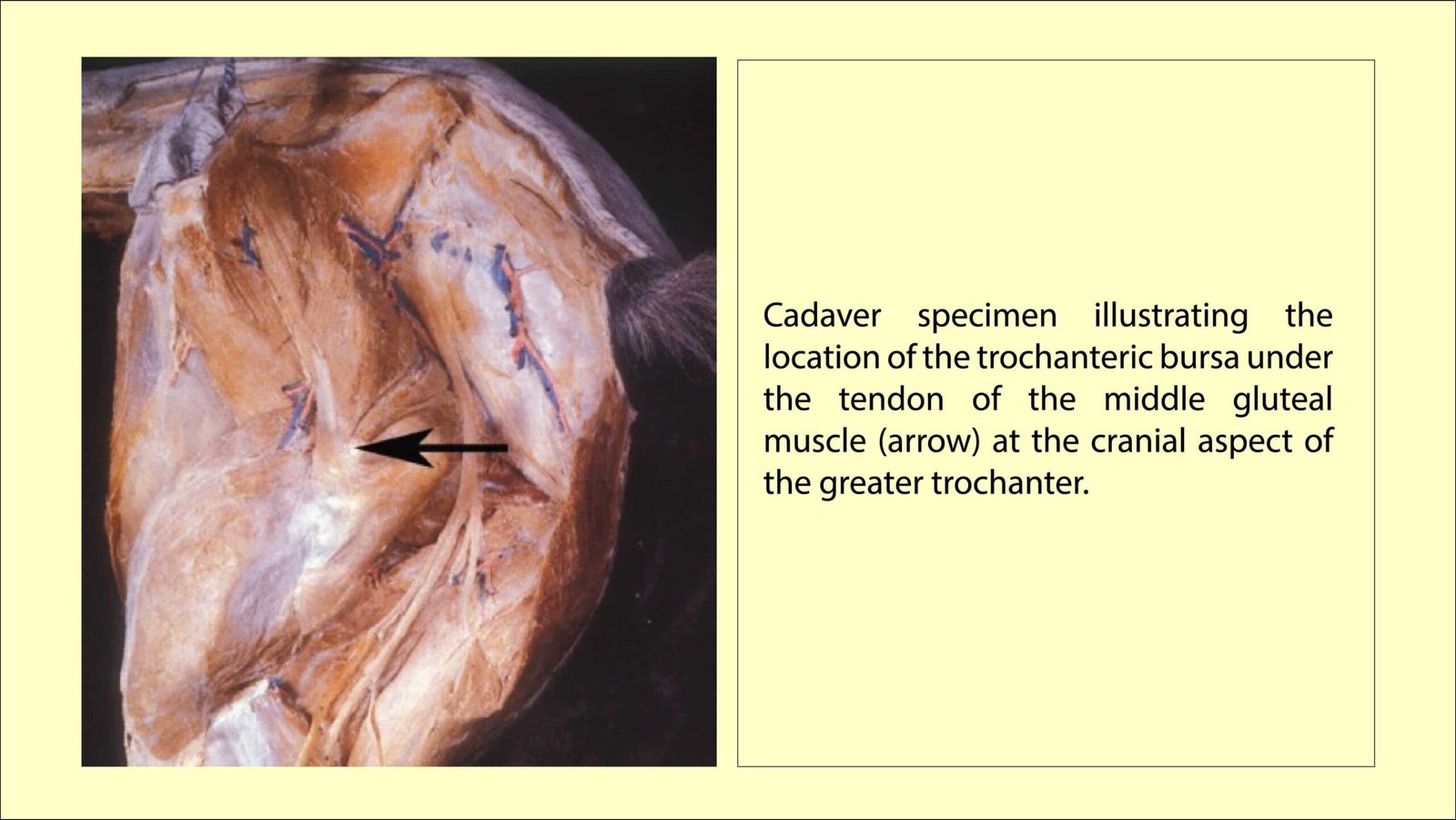TABLE OF CONTENTS
Trochanteric Bursitis in Horses
Trochanteric Bursitis (Whirlbone lameness) in Horses is soreness and lameness found in hindlegs of horses involving a bursa. Thoroughbred race horse, standardbred race horses, steeple chase horses and other sport horses often exhibit lameness that is localized to inflammation of bursa.

Trochanteric bursa is found in the hind legs, it is beneath the tendon of middle gluteal muscle as it passes over the greater trochanter of the femur bone. This area is often referred to as whirlbone.

Etiology
- Severe Trauma and stress such as a direct kick, the cartilage or the bone of the trochanter may be fractured, causing persistent lameness.
- It also has been found following an attack of strangles.
- Trochanteric bursitis occurs in horses racing on small tracks, where the turns are close together, and in horses working on their hindlimbs that are frequently exercised in soft, deep arenas.
- Short heels and long toes in the hind feet seem to predispose to this lameness.
Clinical signs
- Pain may be evident when pressure is applied over the greater trochanter
- At rest, the limb may remain flexed; as the horse moves, weight may be placed on the inside of the foot so that the inside wall of the foot wears more than the outside wall
- After the condition has been present for some time, atrophy of the gluteal muscles occurs.
Diagnosis
- Clinical signs
- Injection of local anaesthetic in to the bursa helps in differentiating from coxofemoral osteoarthritis
- Nuclear scinitigraphy
Treatment
- Rest
- Anti inflammatory treatment
- Injection of corticosteroids in to the bursa appears to be more effective method of treatment
- Injection of Lugol’s iodine into or around the bursa as a counterirritant
- Hot packs application
- Treatment is difficult when the cartilage or bone has been damaged with fracture or periostitis.
- Although surgery may be indicated in these cases, no reports could be found regarding the use of surgery
Prognosis
The prognosis is guarded to unfavorable and may be associated with the prognosis of a second source of lameness. The horse may return to soundness if it responds to therapy within 4 to 6 weeks. However, if the injury is more severe, the lameness may remain indefinitely or may recur when the horse is put back into training.